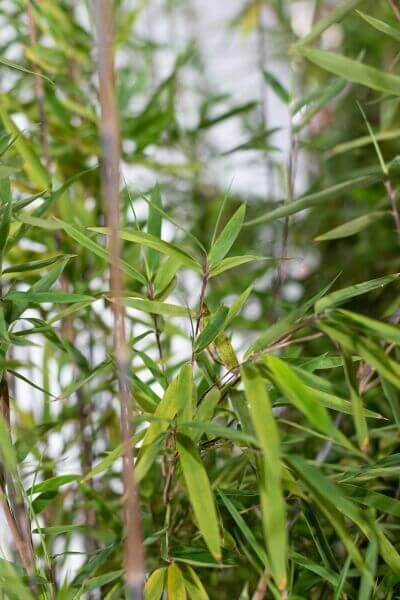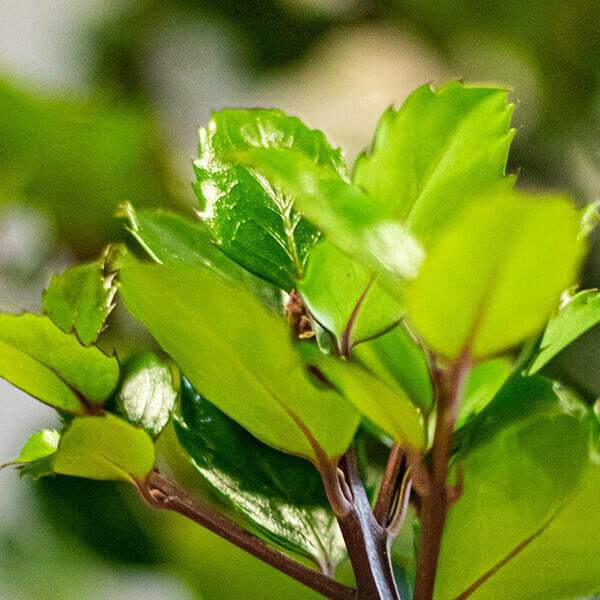Best Hedging Plants For Informal Borders
Improve your garden's allure with lush hedge varieties such as Yew (Taxus), Thuja, Laurel, Photinia, and Bamboo, commemorated for their structural stability and ecological benefits.
Yew and Thuja provide evergreen protection and winter durability, while Laurel offers quick growth and broad, fragrant leaves.
Photinia includes seasonal beauty with its vibrant red foliage, and Bamboo provides a low-maintenance, peaceful atmosphere.
These hedges enhance air quality, minimize noise, and produce tranquil, private areas.
Correct planting, spacing, and maintenance make sure energetic growth and eco-friendly consistency.
Explore how these rich ranges can raise your garden's beauty and well-being.
Key Takeaways
Transform Your Garden With Lush Hedge Ranges
- Select Yew for its thick, evergreen growth and exceptional durability.
- Opt for Laurel for its fast development and broad leaves, ensuring quick personal privacy.
- Choose Photinia for its vibrant seasonal foliage, which turns a striking dark red.
- Utilize Bamboo for a low-maintenance, winter-hardy hedge with aesthetic appeal.
- Space plants 2-3 per meter and prune routinely for optimum growth and health.
Popular Hedge Plants
When transforming a garden with lavish hedge varieties, it's important to think about popular hedge plants such as Yew, Thuja, Laurel, and Photinia due to their unique characteristics and advantages.
Yew (Taxus) is extremely respected for its longevity and dense, green growth, making it a prime option for withstanding landscapes.
Thuja is noted for its evergreen foliage and robust winter season resilience.
Photinia adds seasonal vibrancy with red leaves that darken in time, creating dynamic visual appeal.
Laurel uses quick development and aromatic, broad leaves, ideal for fast personal privacy.
In Addition, Bamboo is an outstanding choice for ambiance, offering a low-maintenance, winter-hardy choice that enhances the garden's aesthetic with its elegant, swaying canes.
These choices deal with a range of horticultural needs and preferences.
Advantages of Garden Hedges
Garden hedges use a multitude of advantages, making them an important addition to any landscape. These natural barriers are affordable to implement and supply considerable wind protection, boosting air flow and contributing to sound reduction. The dense foliage of hedges like Thuja and Beech makes sure personal privacy by obstructing presence, producing a serene and remote environment.
Hedges likewise play an important function in microclimate policy, providing a steady environment that promotes plant growth and minimizes temperature level changes. Their intricate leaf structures filter pollutants, enhancing air quality and contributing to a healthier garden environment.
Furthermore, hedges master sound reduction, soaking up and deflecting sound waves to lower ambient sound levels. This dual performance of offering both acoustic and visual personal privacy improves the overall tranquility and visual appeal of any garden.
Planting and Maintenance Tips
For an effective hedge, careful preparation of the planting area is vital. Ensure the soil has appropriate pH and drain to support strong root development.
Area the plants properly for the chosen species. Water the hedge often throughout its initial growth stage, changing as needed with seasonal changes.
Execute a organized pest control and disease prevention technique, utilizing natural or chemical treatments when required. Frequently check for aphids, termites, and fungal infections.
Apply mulch to retain moisture and suppress weeds. Seasonal pruning promotes dense development and air blood circulation, necessary for plant health.
Following these guidelines will help you cultivate a vibrant, well-kept hedge that boosts the appeal of your garden.
Spacing and Cutting Standards
Spacing and Cutting Standards
Correct spacing and cutting are essential for cultivating healthy, visually appealing hedges. Sufficient spacing guarantees each plant gets adequate nutrients, light, and air flow.
Follow these standards for optimal hedge upkeep:
- Spacing: Position hedge plants 2-3 plants per meter to motivate robust development.
- Pruning Methods: Regular pruning is vital for keeping wanted hedge height and shape. Cut brand-new development in summertime and cut down older wood during winter.
- Seasonal Care: Adjust trimming methods and schedules according to seasonal requirements to make sure plant health.
- Hedge Height: Frequently display and cut to preserve the desired hedge height and achieve consistent aesthetics.
Complying with these actions will ensure your hedge thrives, boosting both the appeal and performance of your garden.
Selecting the Right Hedge
Choosing the Right Hedge
Picking the suitable hedge Additional resources involves examining aspects such as fully grown height, foliage density, and environmental resilience. Effective hedge plant choice requires comprehending each types' growth attributes and site-specific versatility.
For example, Yew (Taxus) offers excellent durability and dense development, while Thuja is notable for its winter season strength. Additionally, thinking about upkeep requirements is essential; fast-growing types like Laurel or Privet need regular cutting, whereas low-maintenance choices like Bamboo or Ivy may be more effective for those seeking very little upkeep.
Ecological factors such as soil type, light accessibility, and moisture conditions need to also assist the selection procedure. This careful method makes sure the chosen hedges will prosper, providing both aesthetic and practical advantages to the garden landscape.
Shipment and Planting Recommendations
To ensure your hedge plants flourish, they need to be delivered by specialized couriers and planted quickly upon arrival.
Follow these necessary actions for effective planting:
- Soil Preparation: Enrich the soil with natural matter to enhance drainage and nutrient content.
- Planting Depth: Produce a trench two times the width and equivalent to the depth of the root ball.
- Watering Techniques: Water thoroughly after planting, keeping the soil consistently damp however not filled.
- Mulching: Apply a layer of mulch to keep moisture and reduce weeds.
Consumer Assistance and Service
Given the important function of prompt help in horticultural pursuits, our consumer support team is available six days a week through telephone, email, and social media to provide expert suggestions and quickly resolve any concerns. Their dedication to quick response times guarantees client complete satisfaction by solving inquiries connected to plant health, optimum planting approaches, and upkeep schedules.

-------------------
Email
Six days a week
This extensive assistance system, enhanced by a stellar 9.3/ 10 customer score, highlights our dedication to boosting the gardening experience for every client.
Frequently Asked Questions
How Long Does It Take for Hedge Plants to Establish?
Hedge plants typically require one to three years to become completely established, with the precise duration varying by species and growing conditions.
Effective care throughout this critical duration is essential for robust development. Constant watering, alert weed control, and suitable fertilizer application are critical in promoting strong root development.
For example, fast-growing species like Laurel may develop more rapidly, while slower-growing ranges such as Yew may take longer. Thorough maintenance accelerates the facility procedure, leading to dense and healthy hedges.
What Are the very best Hedge Plants for Personal Privacy?
The concern of the very best hedge plants for privacy involves evaluating evergreen and deciduous alternatives.
Evergreen hedges like Thuja, Laurel, and Cypress supply year-round coverage, ensuring constant personal privacy.
On the other hand, deciduous hedges such as Beech provide seasonal privacy, shedding leaves in colder months.
Secret maintenance tips for personal privacy hedges consist of routine cutting, fertilizing in spring, and proper spacing-- normally 2 to 3 plants per meter.
In addition, consistent watering and thorough weed elimination are essential for promoting healthy, thick growth.
Can Hedge Plants Attract Wildlife to My Garden?
Yes, hedge plants can draw in wildlife to your garden by providing necessary benefits like shelter, food, and nesting websites, consequently enhancing regional biodiversity. For example, yew, holly, and laurel are exceptional for drawing in birds, while ivy supports a range of bugs.
Nevertheless, it is very important to keep in mind that there are some drawbacks, such as increased upkeep to handle insects and routine upkeep. Thoroughly selecting and preserving hedge ranges can help stabilize these advantages and disadvantages, ultimately cultivating a vibrant and sustainable environment in your garden.
Are There Any Flowering Hedge Plants Available?
Yes, there are flowering hedge plants readily available that can boost the beauty of your garden.
For example, Elaeagnus, likewise called Olive Willow, produces fragrant white flowers in the fall, including a touch of sophistication.
Photinia, another popular choice, showcases vibrant red leaves that develop into an abundant green, developing a dynamic visual impact throughout the seasons.
To guarantee these plants grow, it's important to practice proper pruning methods and seasonal upkeep, such as cutting brand-new development in the summer and cutting back in the winter season.
These procedures will help maintain the health and aesthetic appeal of your flowering hedges.
How Do I Avoid Bugs in My Hedge Plants?
To avoid pests in hedge plants, employ natural pest control methods and preserve appropriate hedge care. Introduce useful pests like ladybugs, which victimize damaging bugs, to develop a well balanced environment.
Frequently check your hedges for indications of invasion and without delay get rid of any afflicted parts to avoid the spread. Make sure the health of your hedges by using balanced fertilizers and providing adequate water.
Utilize mulching to maintain soil wetness and appropriate spacing to decrease plant stress and promote robust growth. These practices jointly assist in lessening pest issues and keeping a healthy hedge.
Conclusion
In essence, picking the best hedge varieties such as Yew, Thuja, and Laurel can transform any garden into a serene sanctuary. These plants offer year-round greenery, boost aesthetic appeal, and deal useful benefits like noise reduction and wind defense.
Correct planting methods, accurate spacing, constant watering, and seasonal trimming are vital for optimum development.
Trustworthy delivery services and expert consumer support make sure a seamless experience from purchase to planting, making it simpler than ever to raise your outside space.
Garden hedges offer a plethora of benefits, making them a valuable addition to any landscape. These natural barriers are economical to implement and provide considerable wind protection, improving air circulation and contributing to sound reduction. The dense foliage of hedges like Thuja and Beech makes sure privacy by blocking visibility, developing a remote and peaceful environment.

Pruning Strategies: Routine pruning is vital for maintaining wanted hedge height and shape. Cut new development in summertime and cut back older wood during winter season.